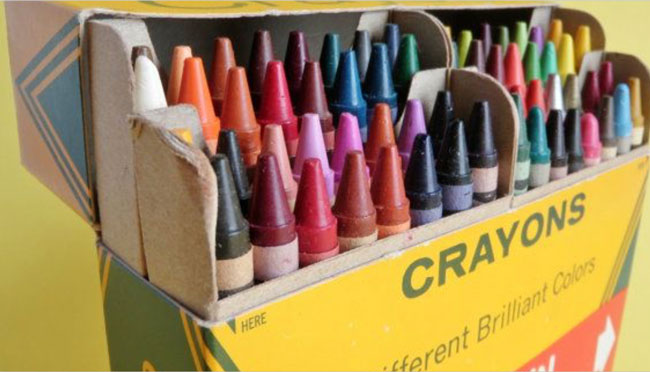
How many crayons do you need to make a masterpiece?
If you are judging by how many they give you with the kid’s menu at a restaurant, apparently the answer is often…two.
Back in the day, a box of 64 Crayola crayons — complete with a sharpener in the back — was as valuable as anything on earth. It contained every color known to mankind (who even knew there was such a color as periwinkle?!), including silver and gold, which I’m convinced was made with real bits of the precious metals.
A box of 64 crayons turned anyone into an artist. Everything was possible; there was nothing you couldn’t draw.
Even though we are no longer turning out drawings to be hung on the fridge, we still assume the role of artist, so to speak. We are now tasked with creating better communities, businesses, and teams. And we often yearn for a bigger budget, less red tape, or more cooperation from colleagues, upper management, and politicians. We could use more training, more structure, more resources.
How we long for the unlimited possibilities that box of 64 crayons represented! If only I had brick red! Can you imagine what I’d do with periwinkle? We could make a real difference with silver and gold in our crayon box!
You may want the big box of 64 crayons, but there is never a time when you’ll have everything you wish you had. Most of the time, it feels like you’re a few crayons short of filling the humble box of 8.
Short of the resources that would make your work significantly easier or more effective, it’s easy to feel paralyzed and tempted to throw your hands up in resignation.
But here’s an important truth to keep in mind. The best painters in the world can create a masterpiece with only four colors: red, yellow, blue, and white.
Almost any color can be created with these humble hues.
Even though art supply stores feature walls of paint tubes in a dizzying array of colors, the master teachers implore their students to proactively limit their palette to a handful of colors to ensure a harmonious, pleasing result.
True creativity thrives when constrained by limitations. During the Renaissance period, blue was a very expensive pigment. But when you are using a lot of warm earth tones, as those painters did, a neutral made from black and white can take on a blue tone by comparison.
Having access to all the colors does not make one an artist. It’s about knowing how to use the ones you have.
Whether you are an educator, a healthcare professional, an entrepreneur, or a parent trying to raise great kids, I understand that you wish you had more time, more resources, and more freedom to do the important work that needs to be done.
Unfortunately, that may never be the case. It rarely is in the real world.
But that’s ok.
You are simply called to do the best you can with what you have.
Don’t let your limitations hold you back, dear artist.
You may not have the box of 64 crayons, but you have everything you need to make a masterpiece.